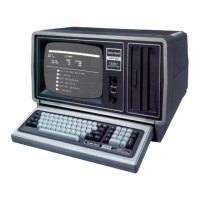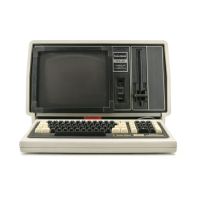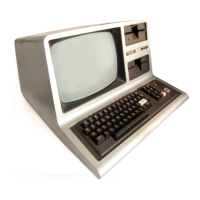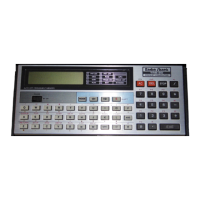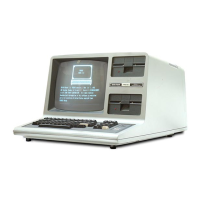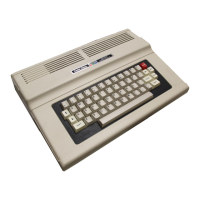88
The RS-232C board is a port mapped device and the
ports used are E8 to EB. Following is a description of
each port on both input and output.
PORT INPUT OUTPUT
E8 Modem status Master Reset, enables
UART control register
load
EA UART status UART control register
load and modem control
E9 Not Used Baud rate register load
enable bit
EB Receiver Holding Transmitter Holding
register register
Interrupts are supported on the RS-232C option
board by the Interrupt mask register (U10) and the
Status register (U9) which allows the CPU to see
which kind of interrupt has occurred. Interrupts can
be generated on receiver data register full,
transmitter register empty, and any one of the errors -
parity, framing, or data overun. This allows a min-
imum of CPU overhead in transferring data to or from
the UART. The interrupt mask register is port E0
(write) and the interrupt status register is port E0
(read). Refer to the IO Port description for a full
breakdown of all interrupts and their bit positions.
The Model 4 RS-232C board is functionally identical
to the Model I RS-232 board with the following
exceptions:
Interrupts are supported, there are no sense switches
for configuring the interface, there is no COM/TERM
switch for reversing the function of pins 2 and 3 on
the DB-25. and the DC to DC converter is not
required since +12V and -12V are provided by the
internal power supply. Other differences include three
additional interface outputs and no crystal for the
BRG. All Model I software written for the RS-232
interface is compatible with the Model 4 RS-232C
option board, provided that the software does not use
the sense switches to configure the interface. The
programmer can get around this problem by directly
programming the BRG and UART for the desired
configuration or by using the SETCOM command of
the disk operating system to configure the interface.
The TRS-80 RS-232C Interface hardware manual
has a good discussion of the RS-232C standard and
specific programming examples (Catalog Number 26-
1145).
9.2 Pinout Listing
The following list is a pinout description of the DB-25
connector (P1).
PIN# SIGNAL
1 PGND (Protective Ground)
2 TD (Transmit Data)
3 RD (Receive Data)
4 RTS (Request To Send)
5 CTS (Clear To Send)
6 DSR (Data Set Ready)
7 SGND (Signal Ground)
8 CD (Carrier Detect)
20 DTR (Data Terminal Ready)
22 RI (Ring Indicate
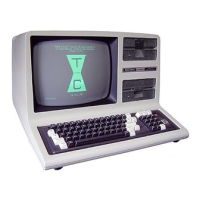
